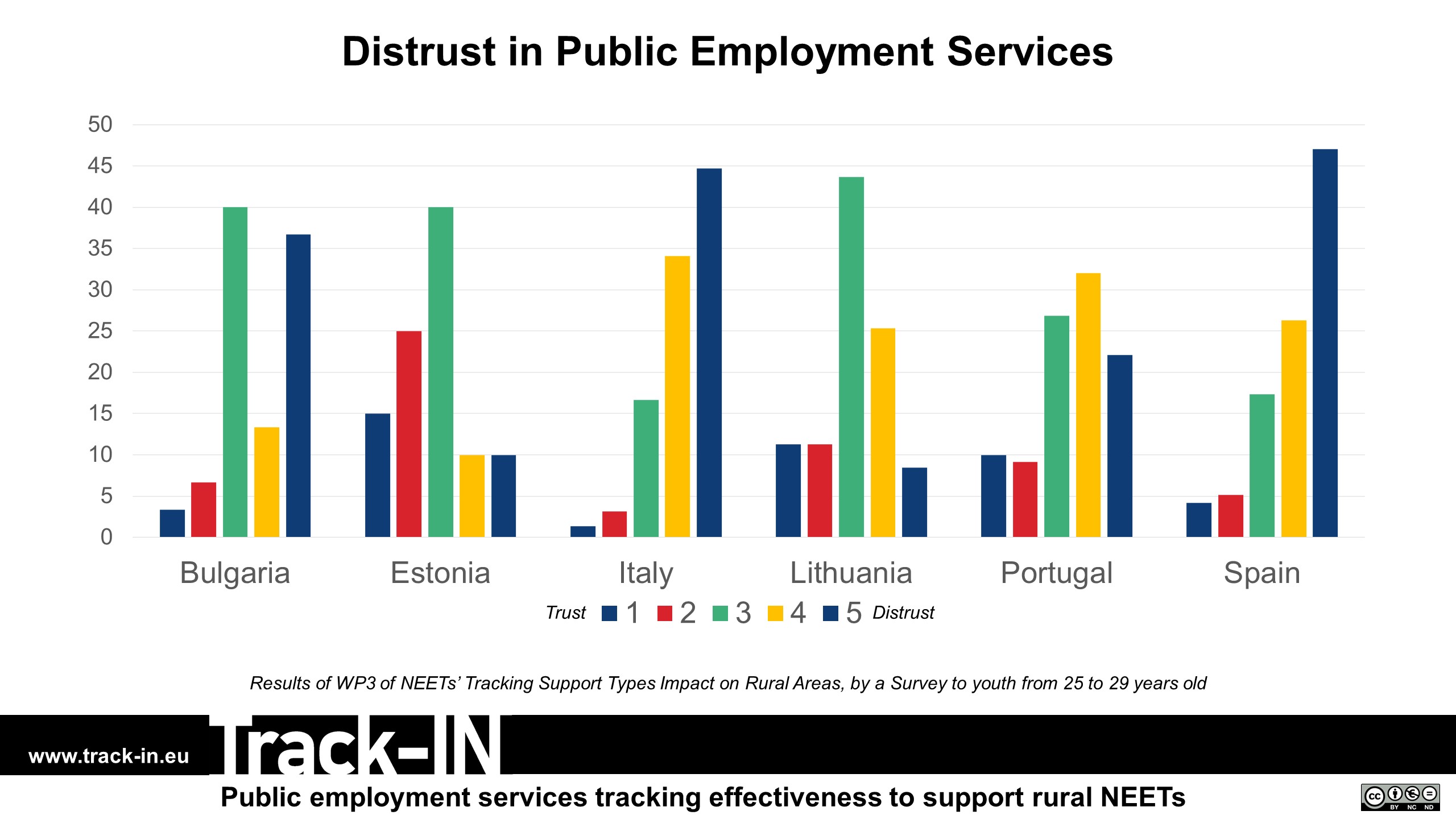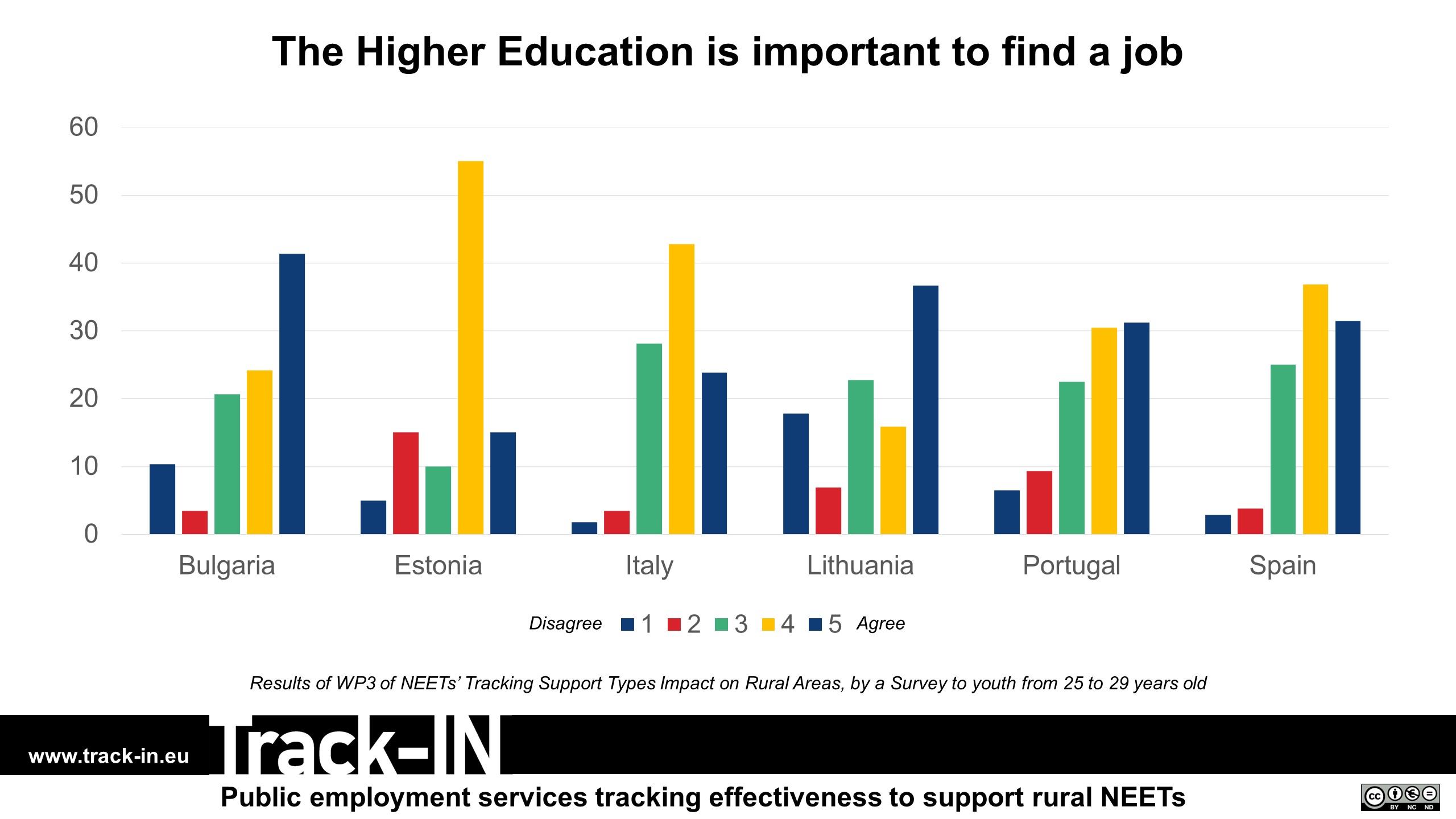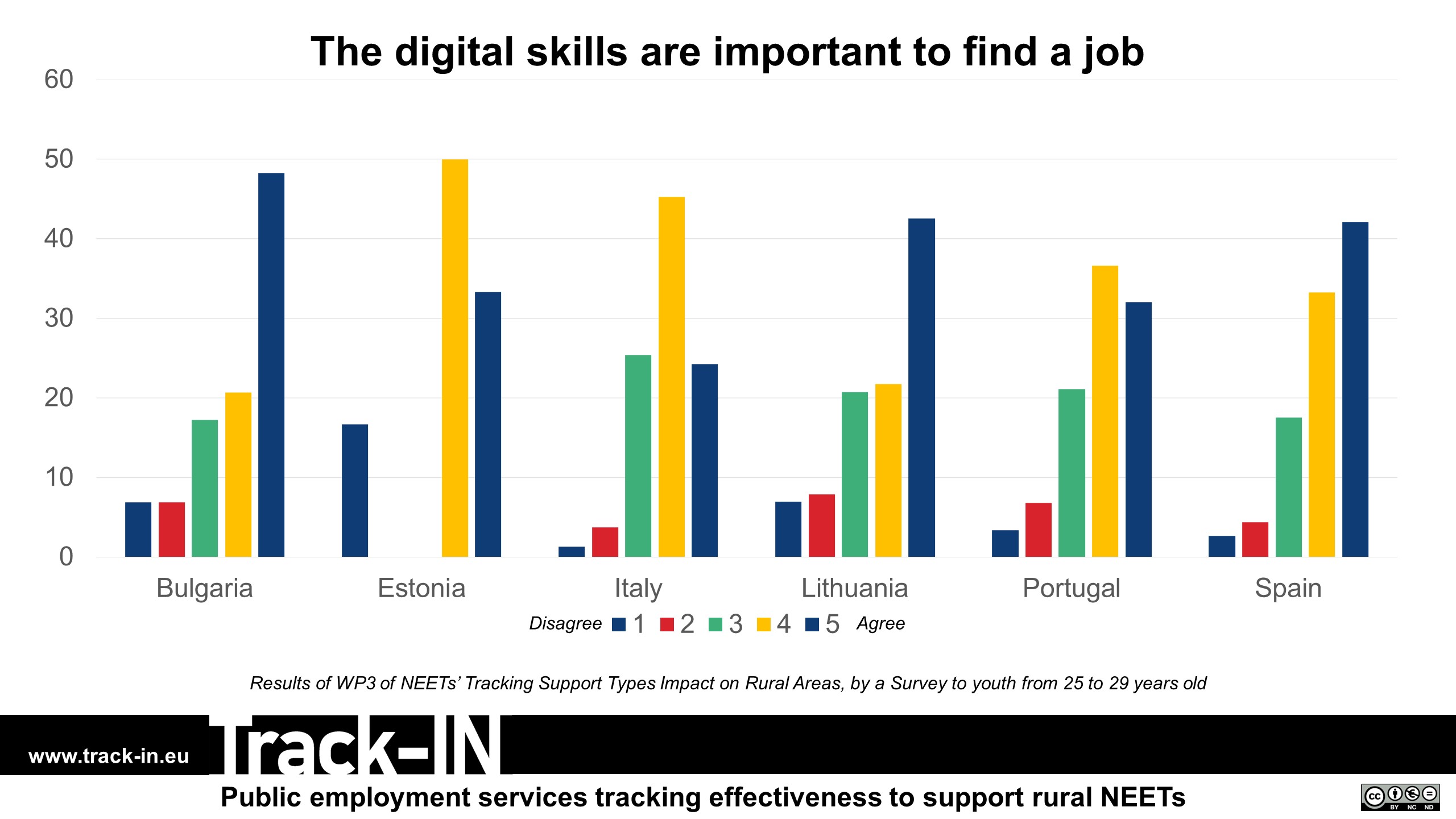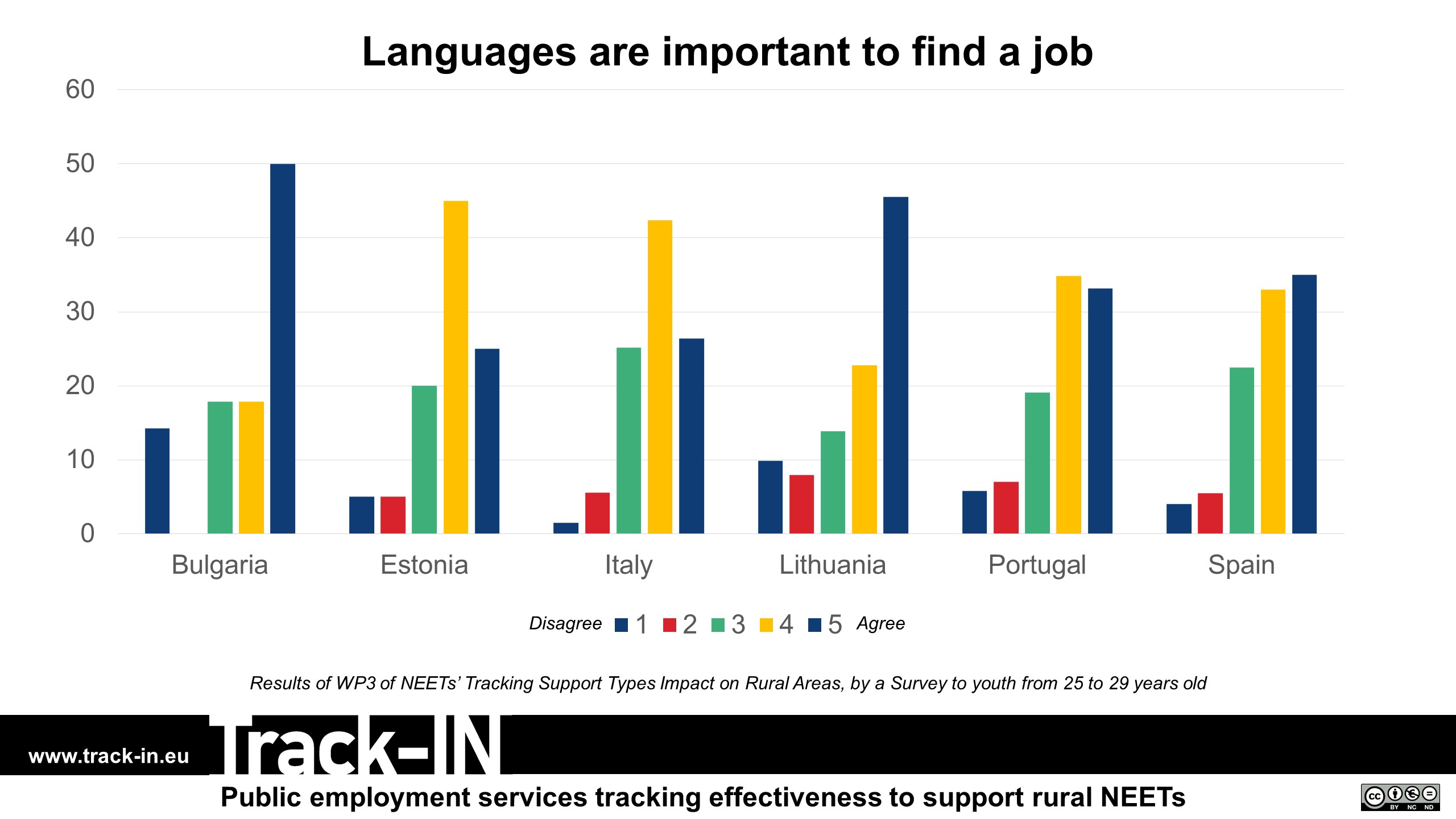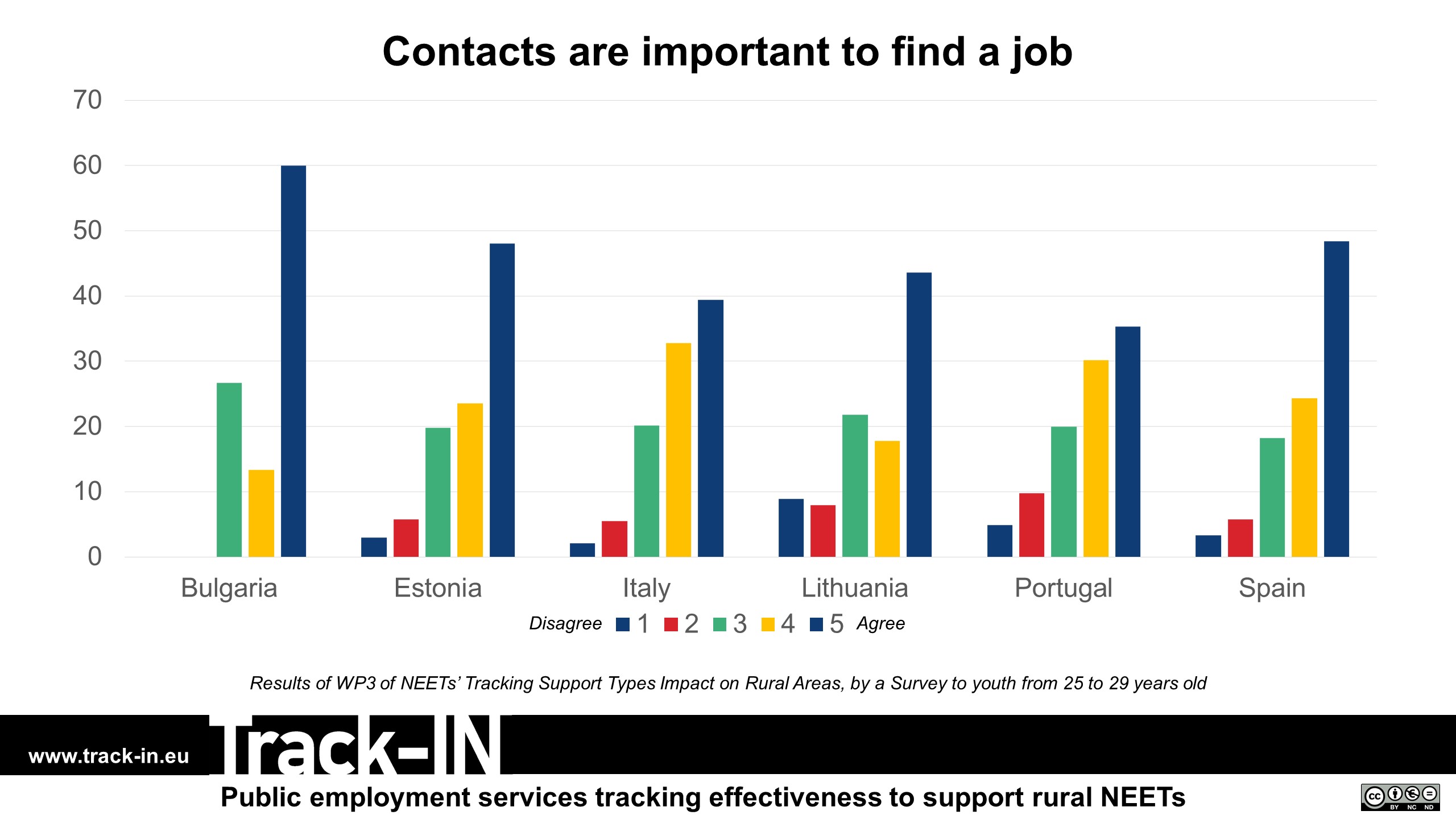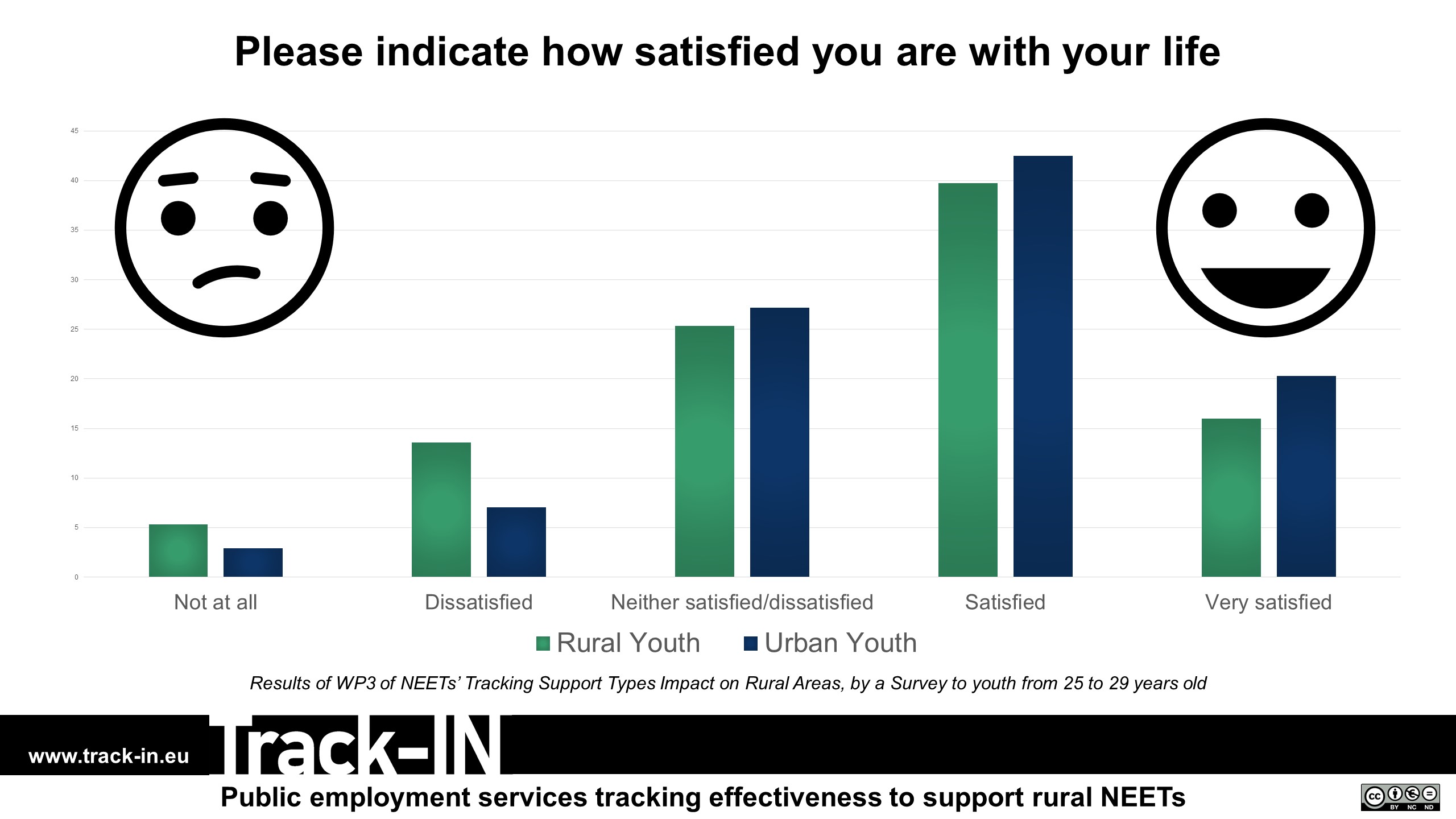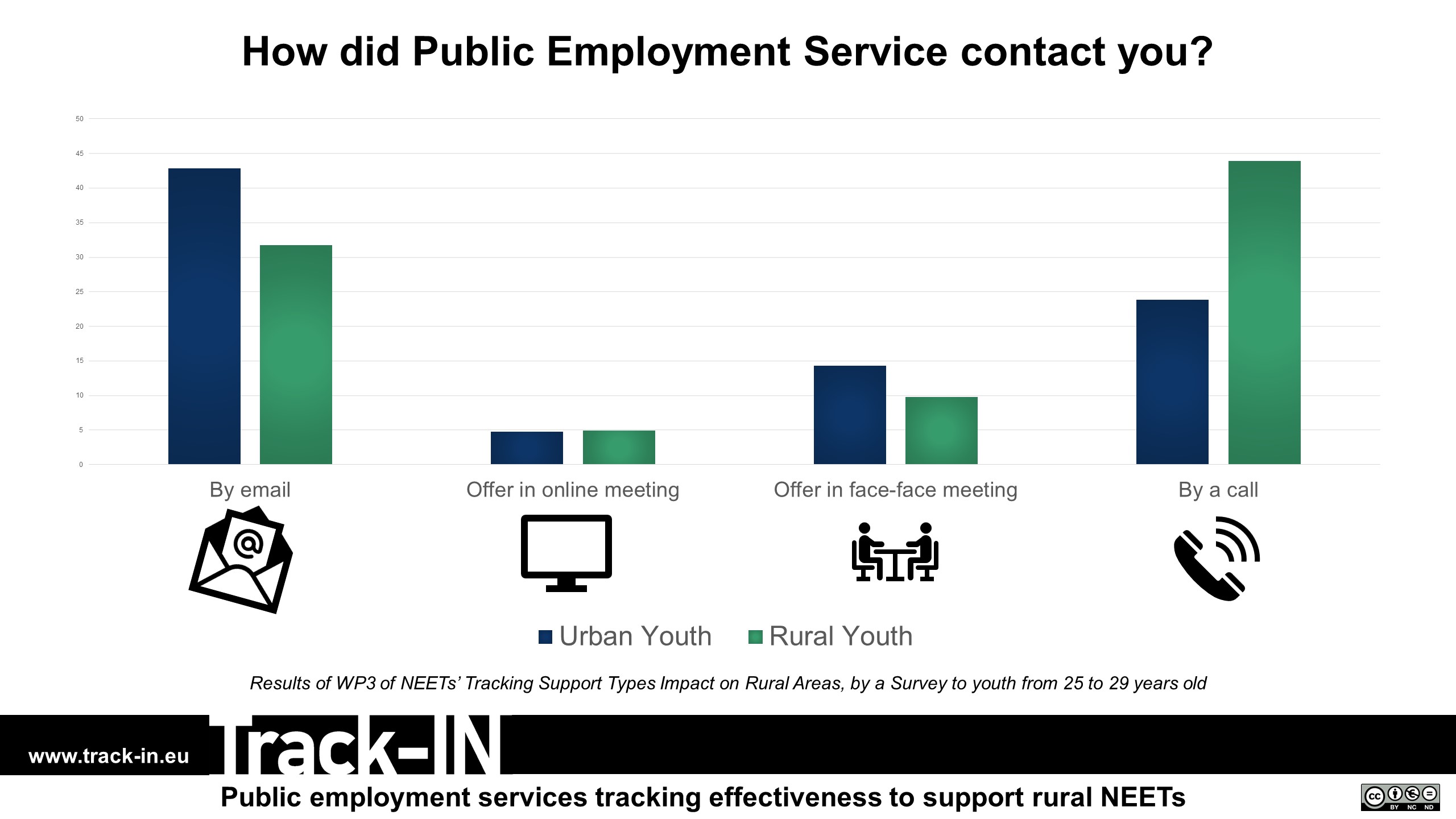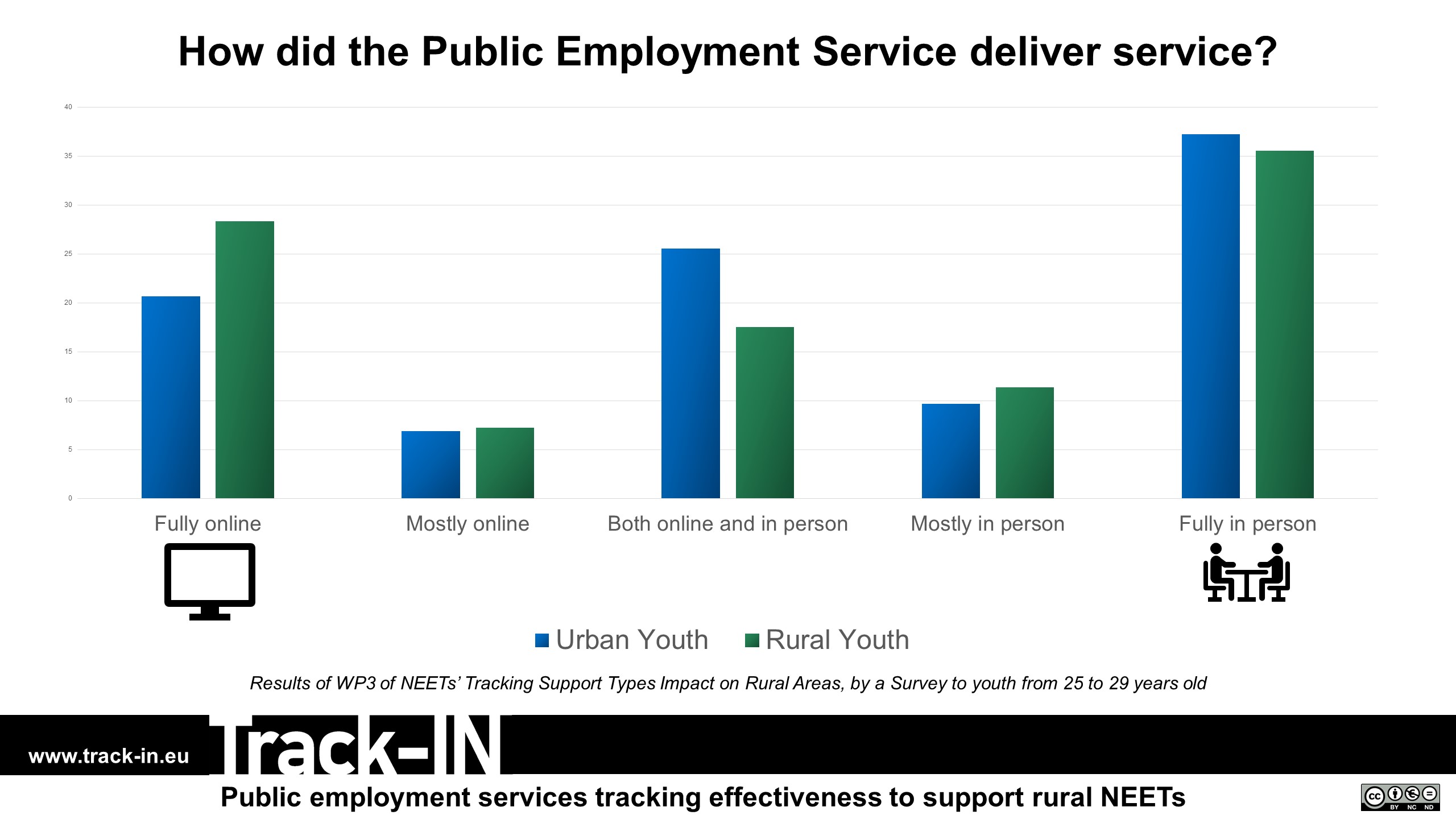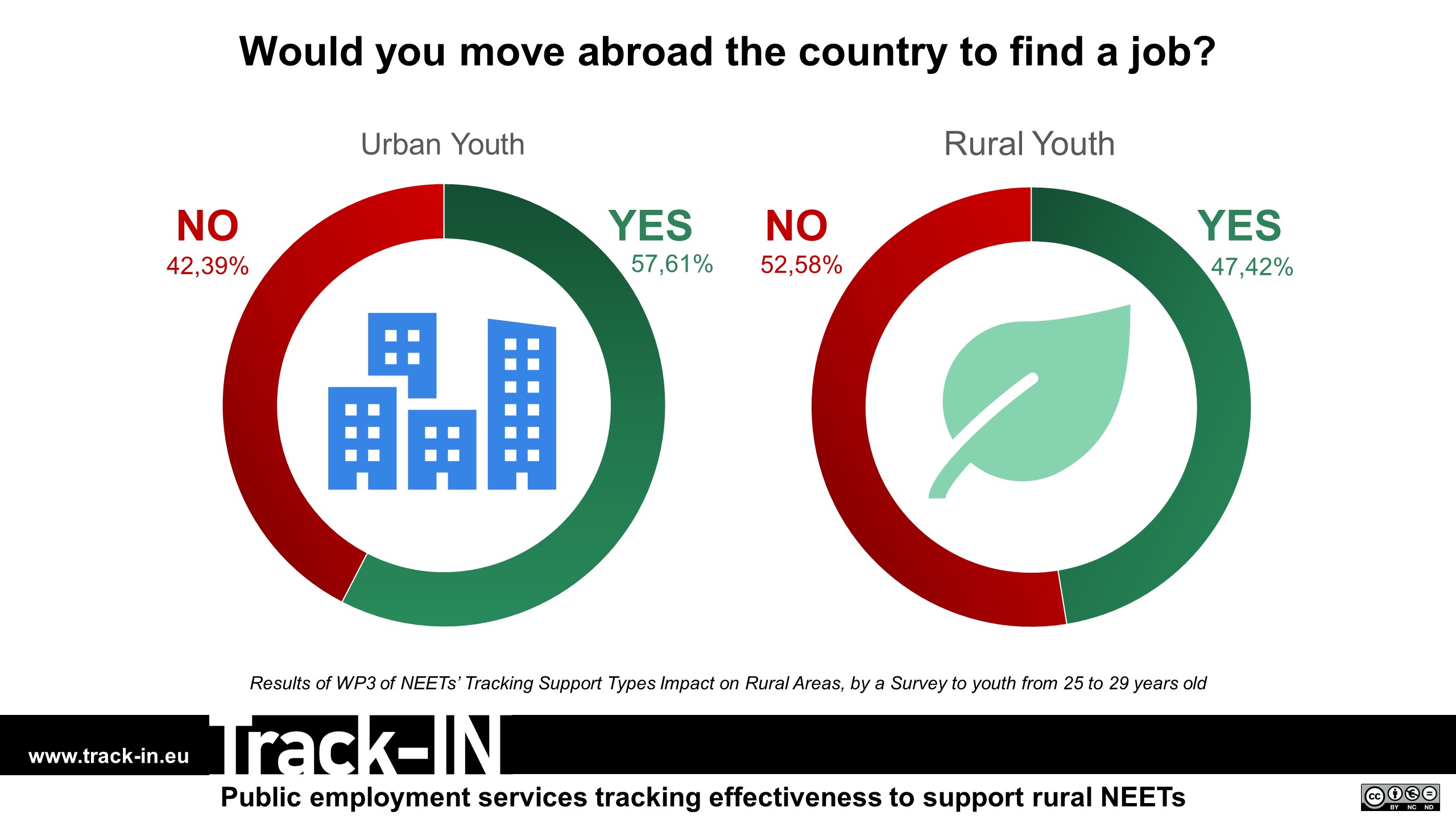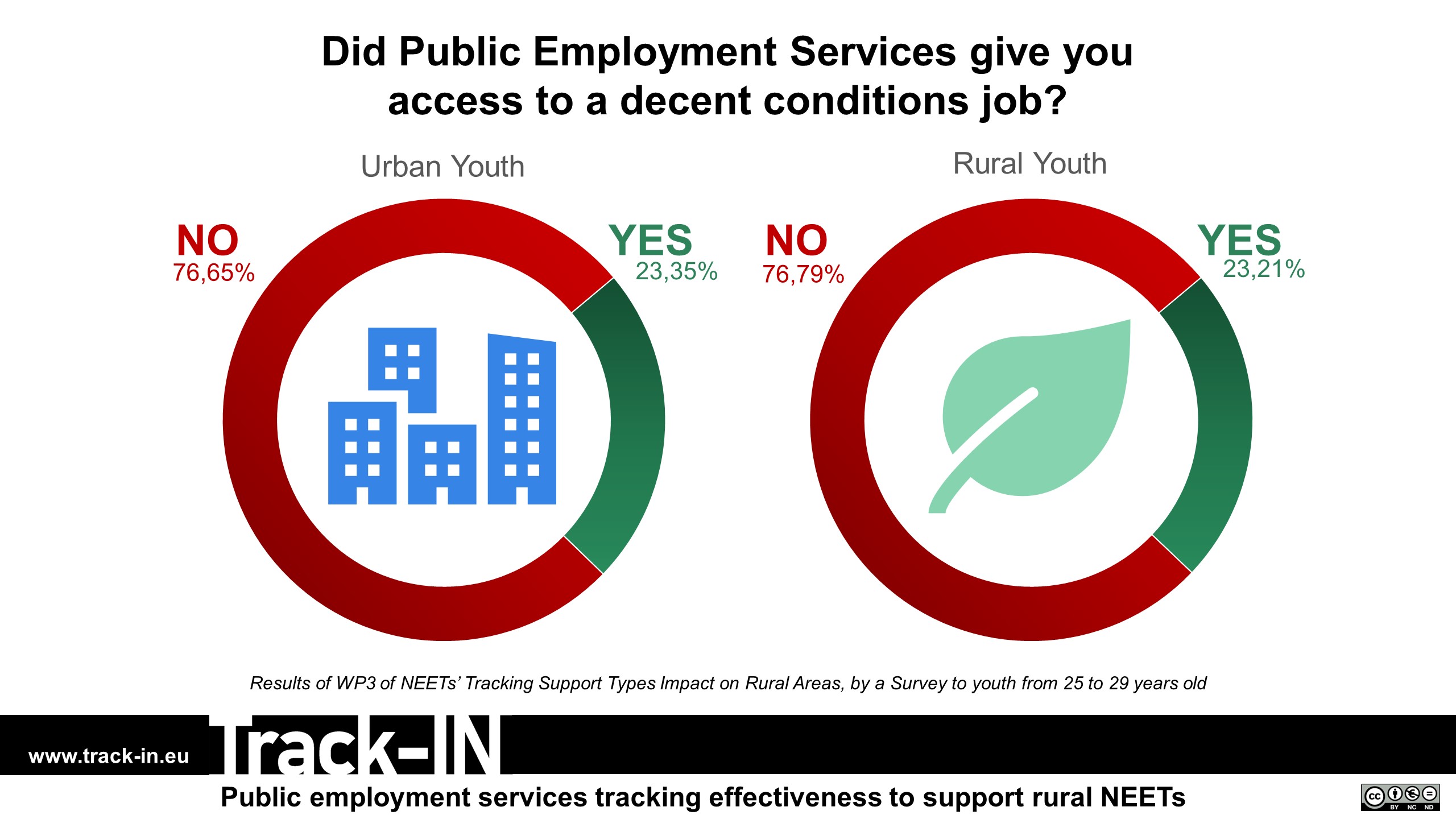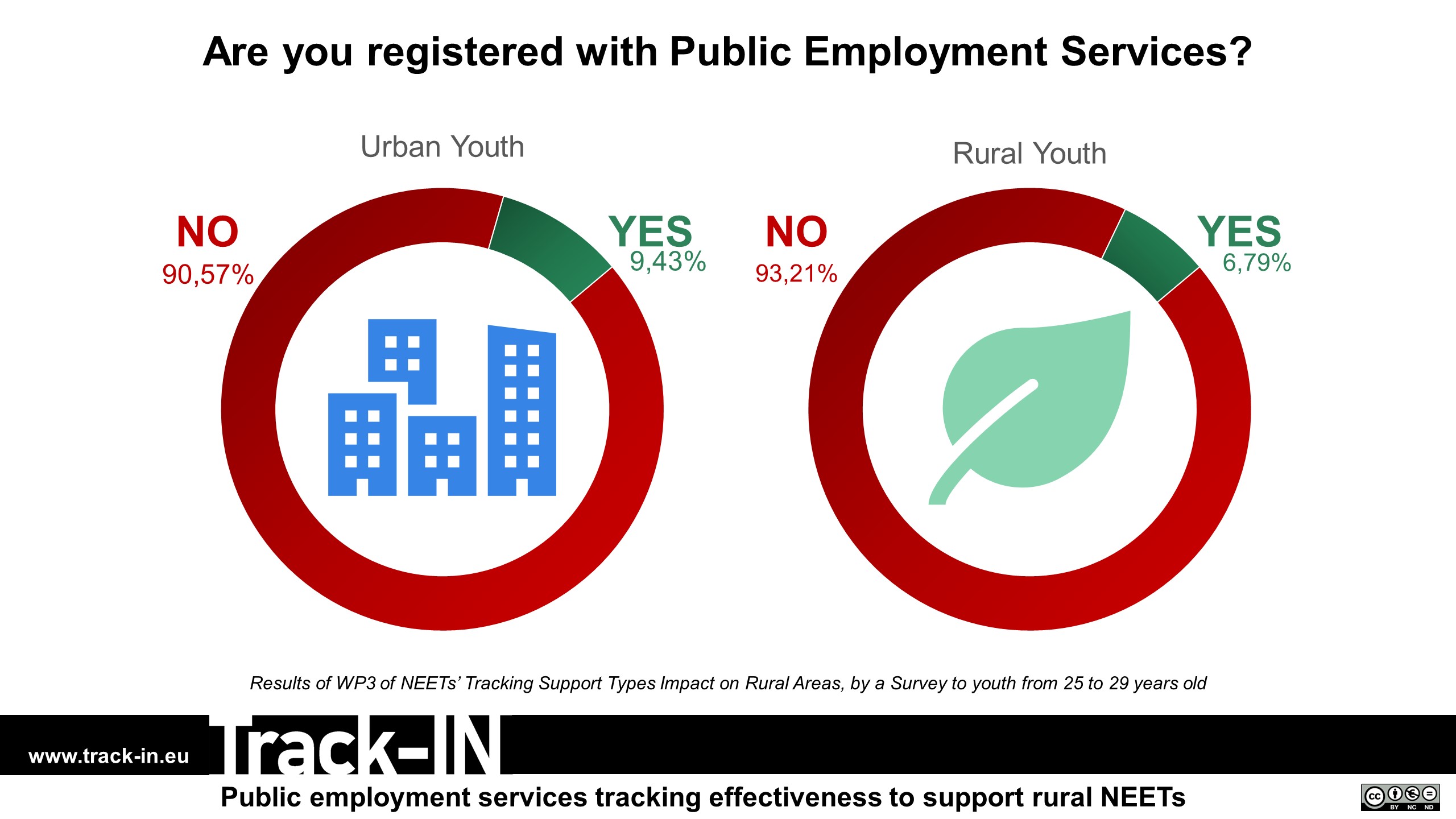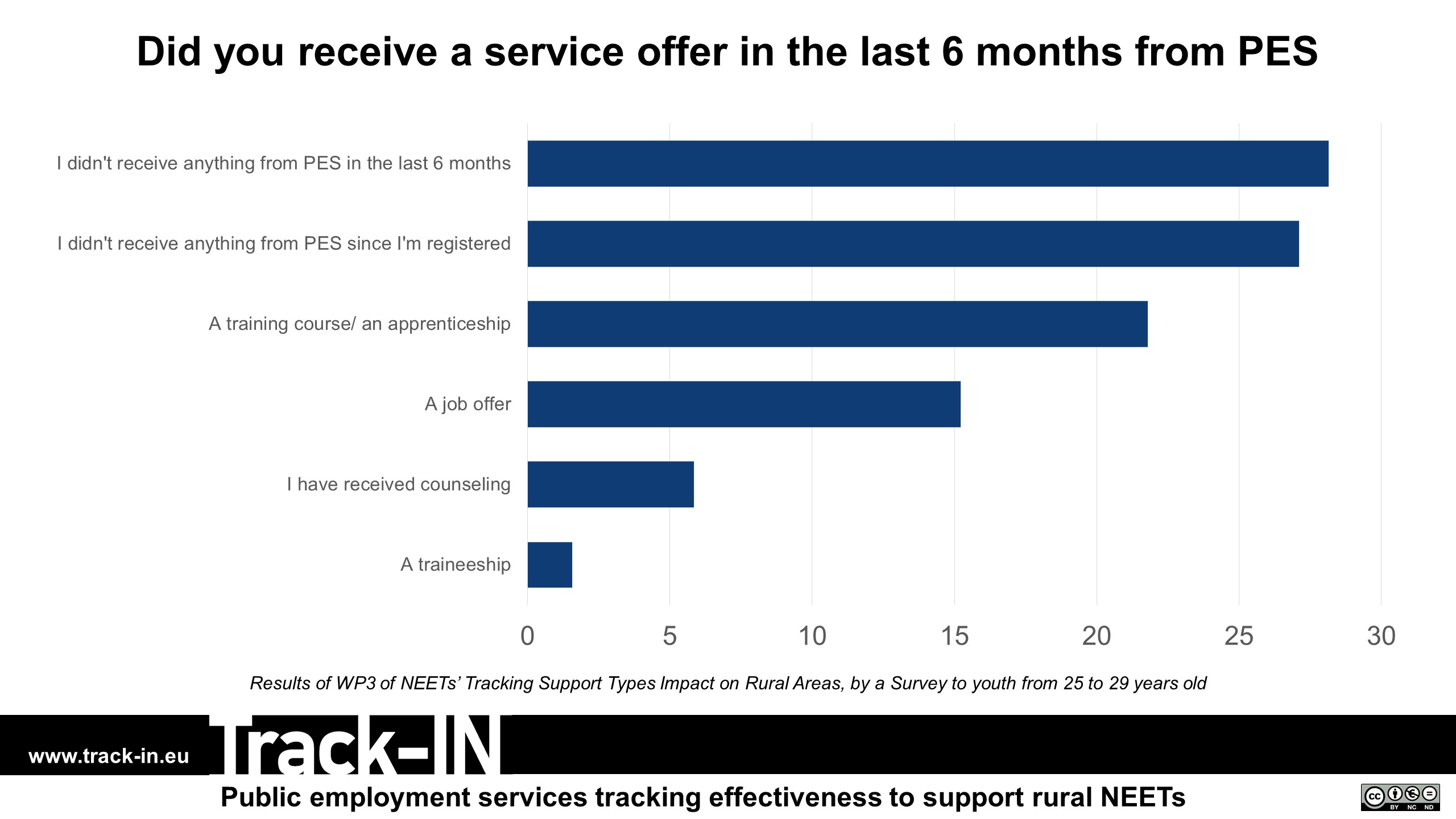INFOGRAPHICS
On this page, we show the main results of our project with a visual review through an infographic gallery.
You can use these infographics, mentioning our project as the main source.
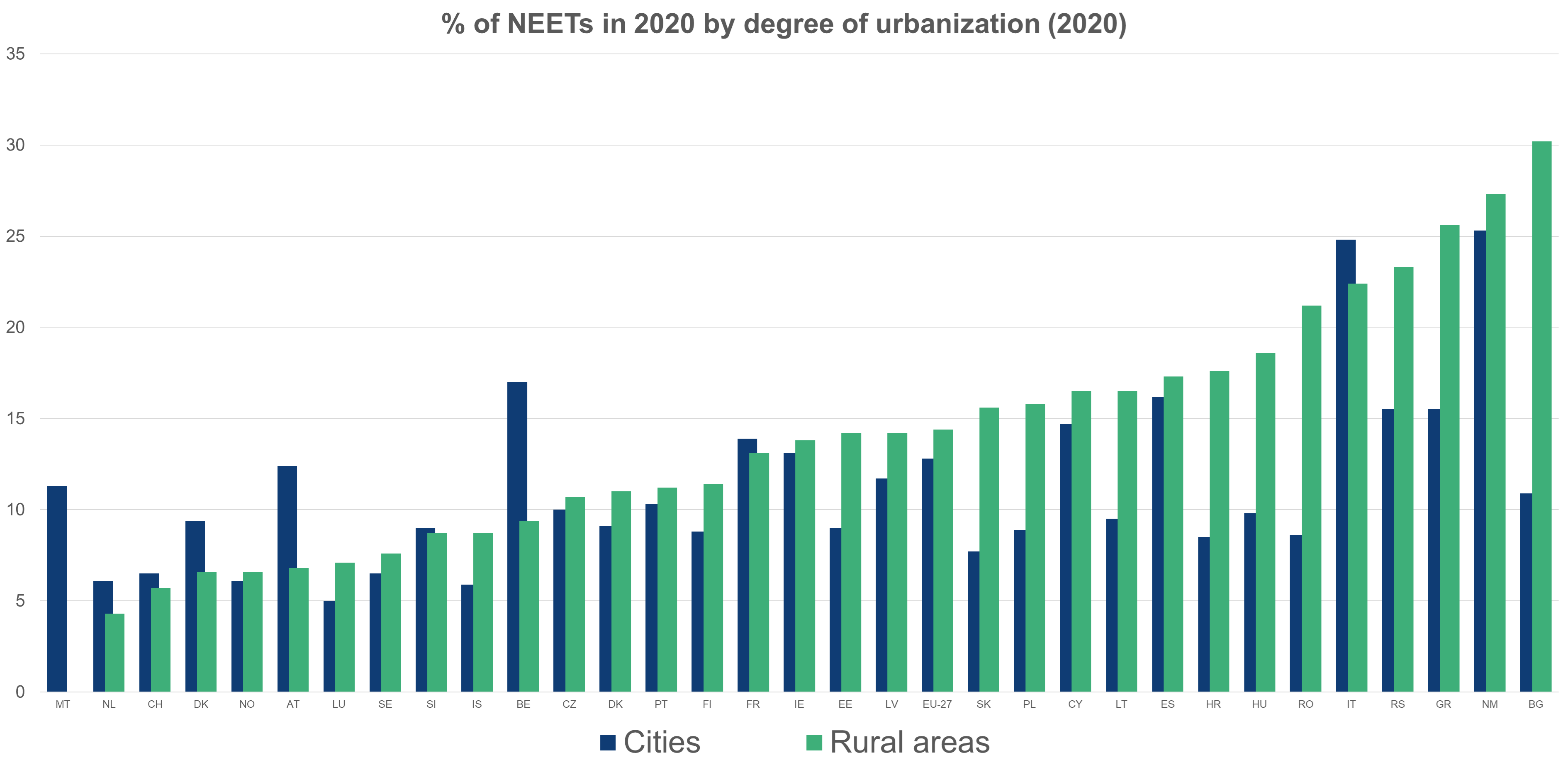
WP1. Policies & PES NEETs’ tracking effectiveness in rural areas
This WP made a transnational comparative assessment of policies affecting NEETs’ PES tracking in rural areas in all beneficiary countries, to be executed in 3 steps:
(1) Data collection: triangulation between a systematic review of reports from international organizations (e.g. Eurofound, ILO, OECD), academic literature on the topic of public employment policies for NEETs and (inter)national legislative packages issued in the past 10 years associated with PES deliverance;
(2) Policy analysis protocol development and implementation covering: stages of analysis, policy indicators definition, comparison methodologies, etc.;
(3) Data analysis: covering quantitative, qualitative and secondary analyses.
These are the main results:
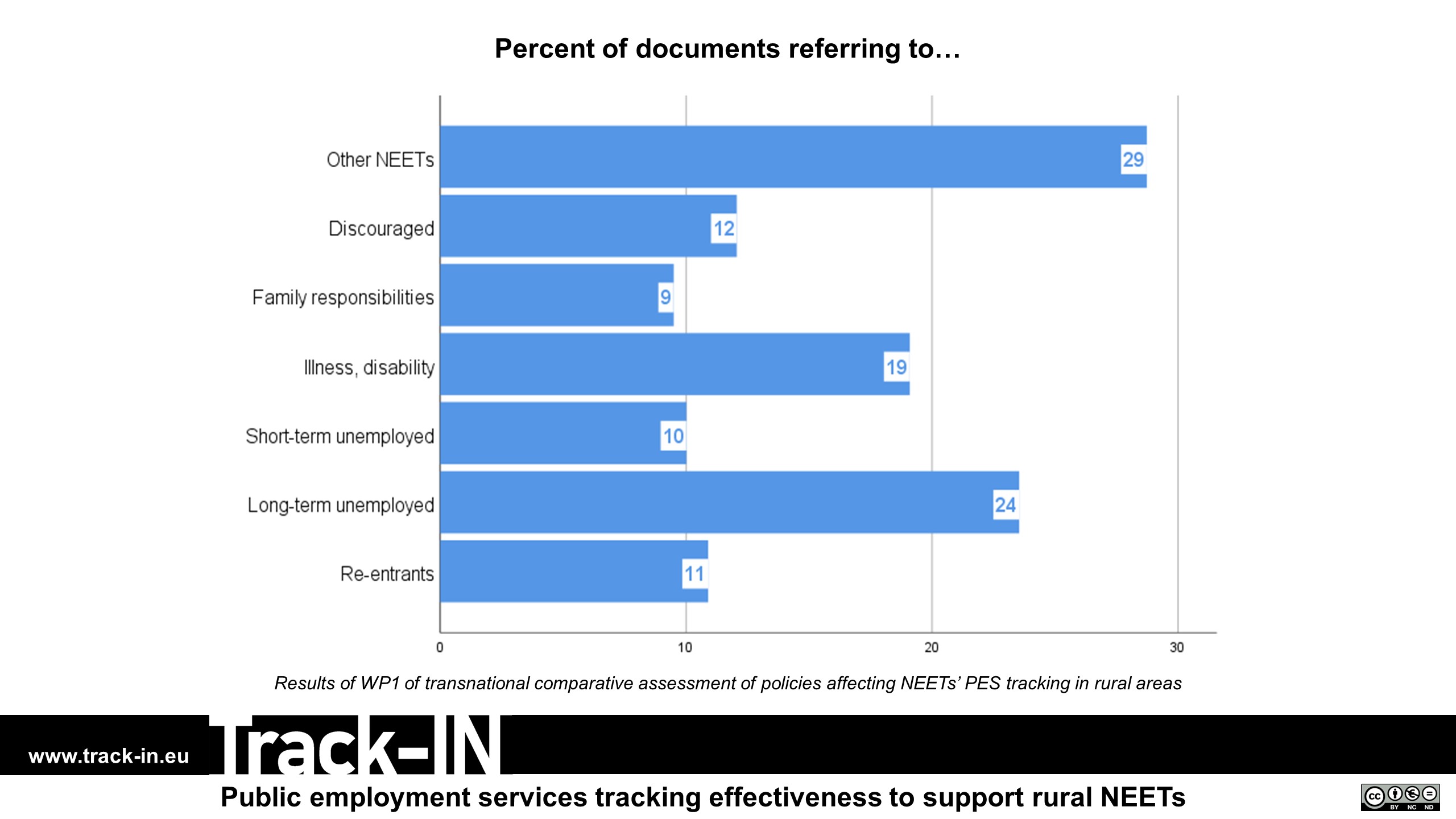
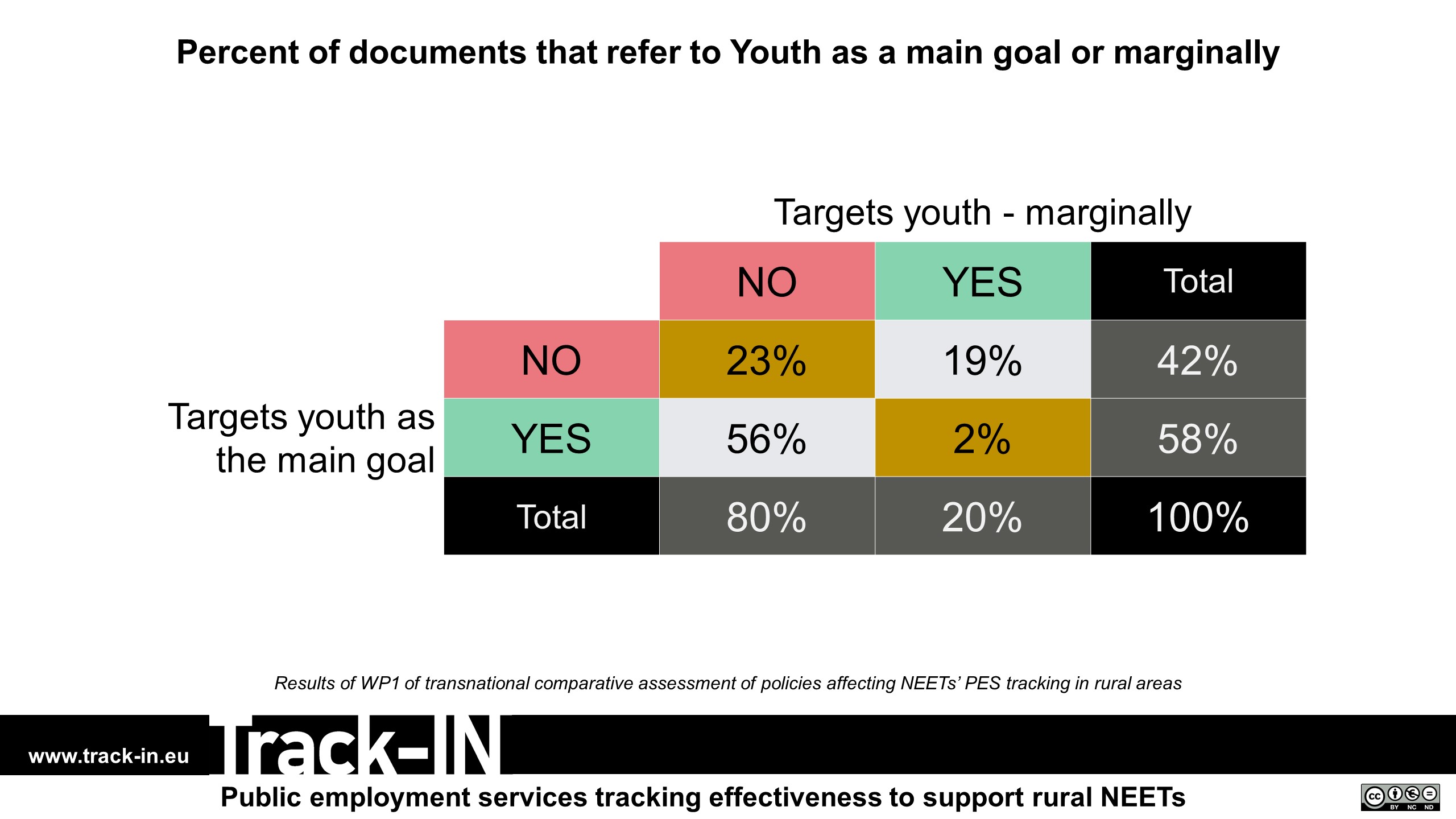
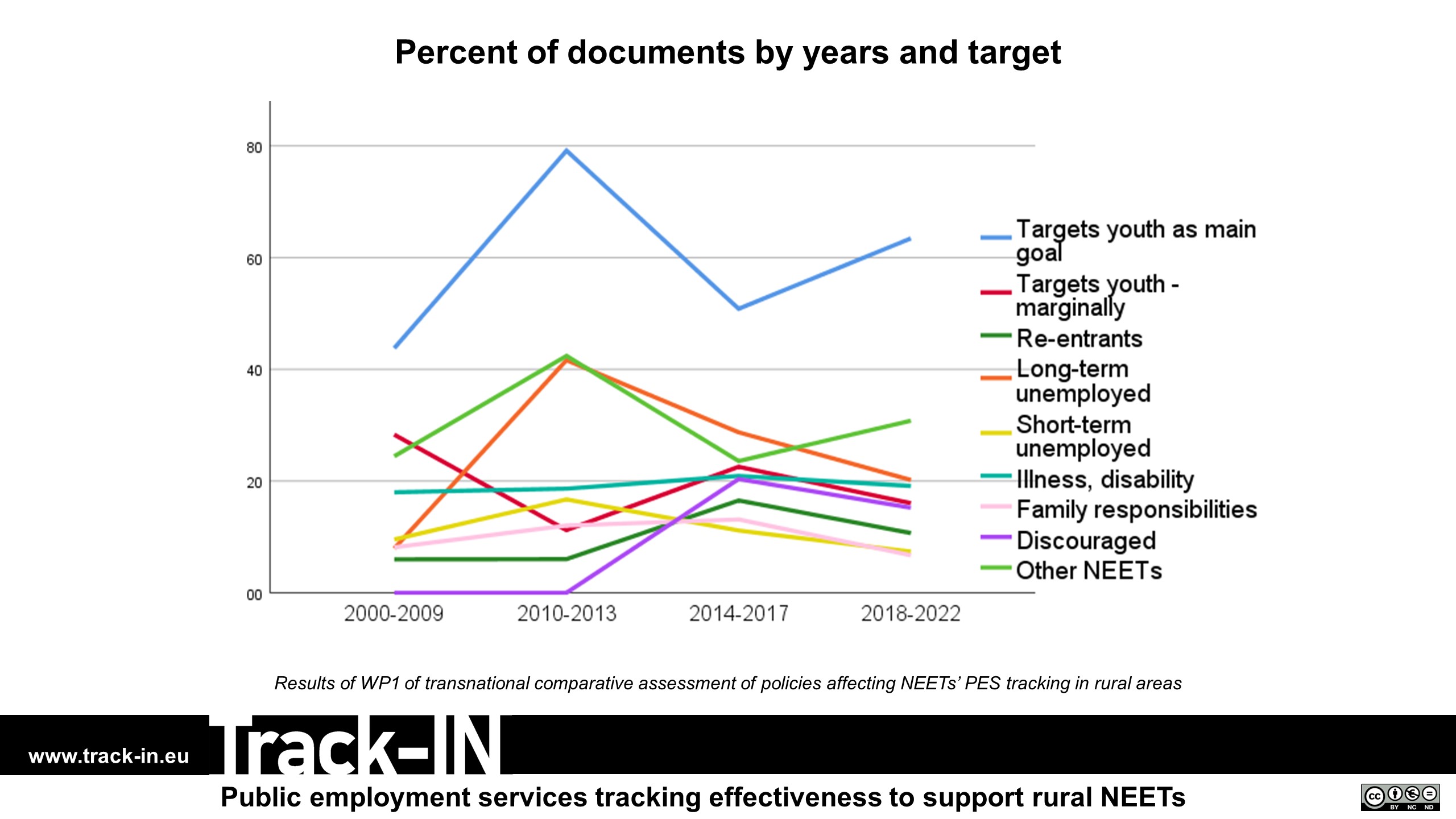
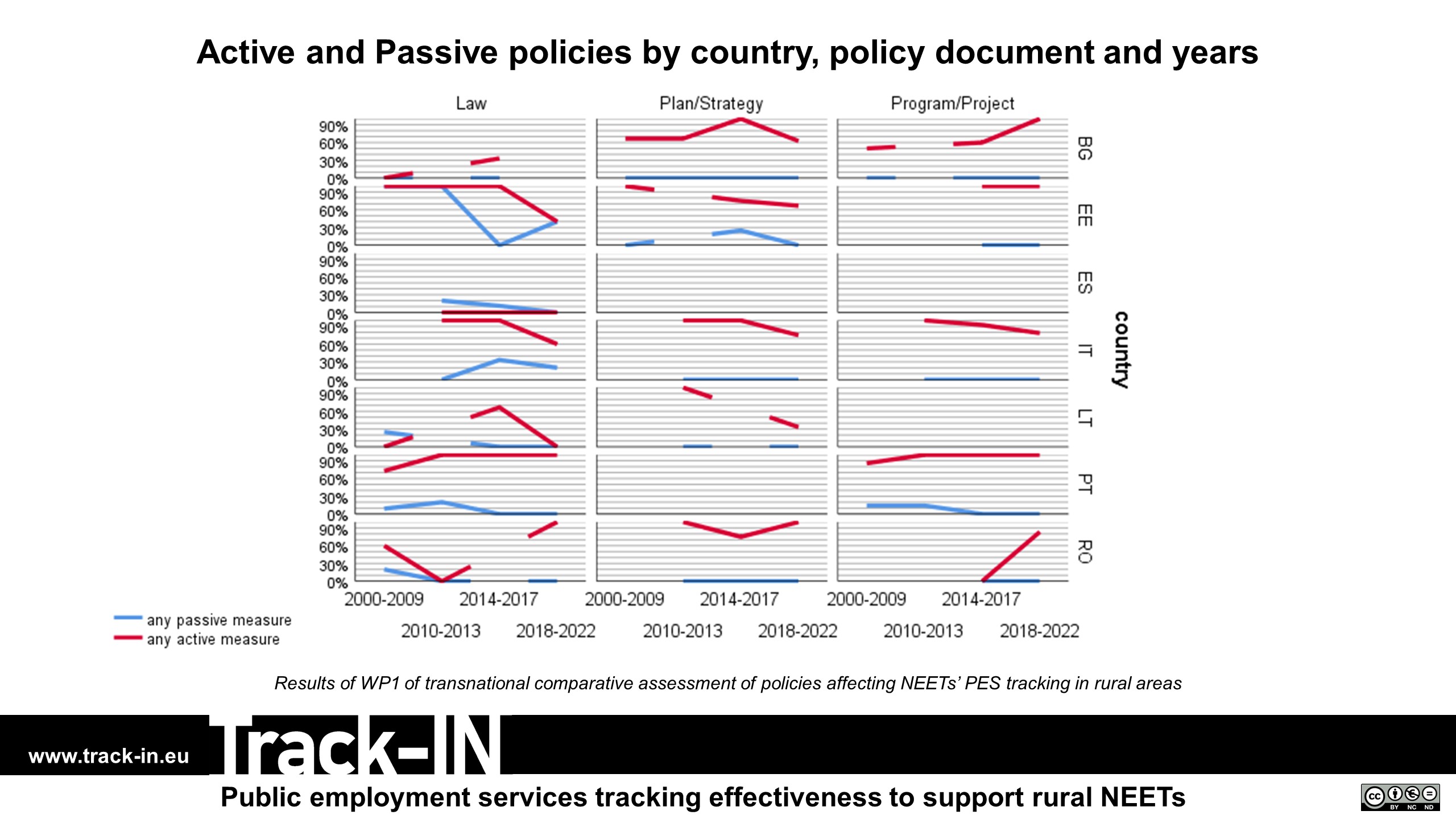
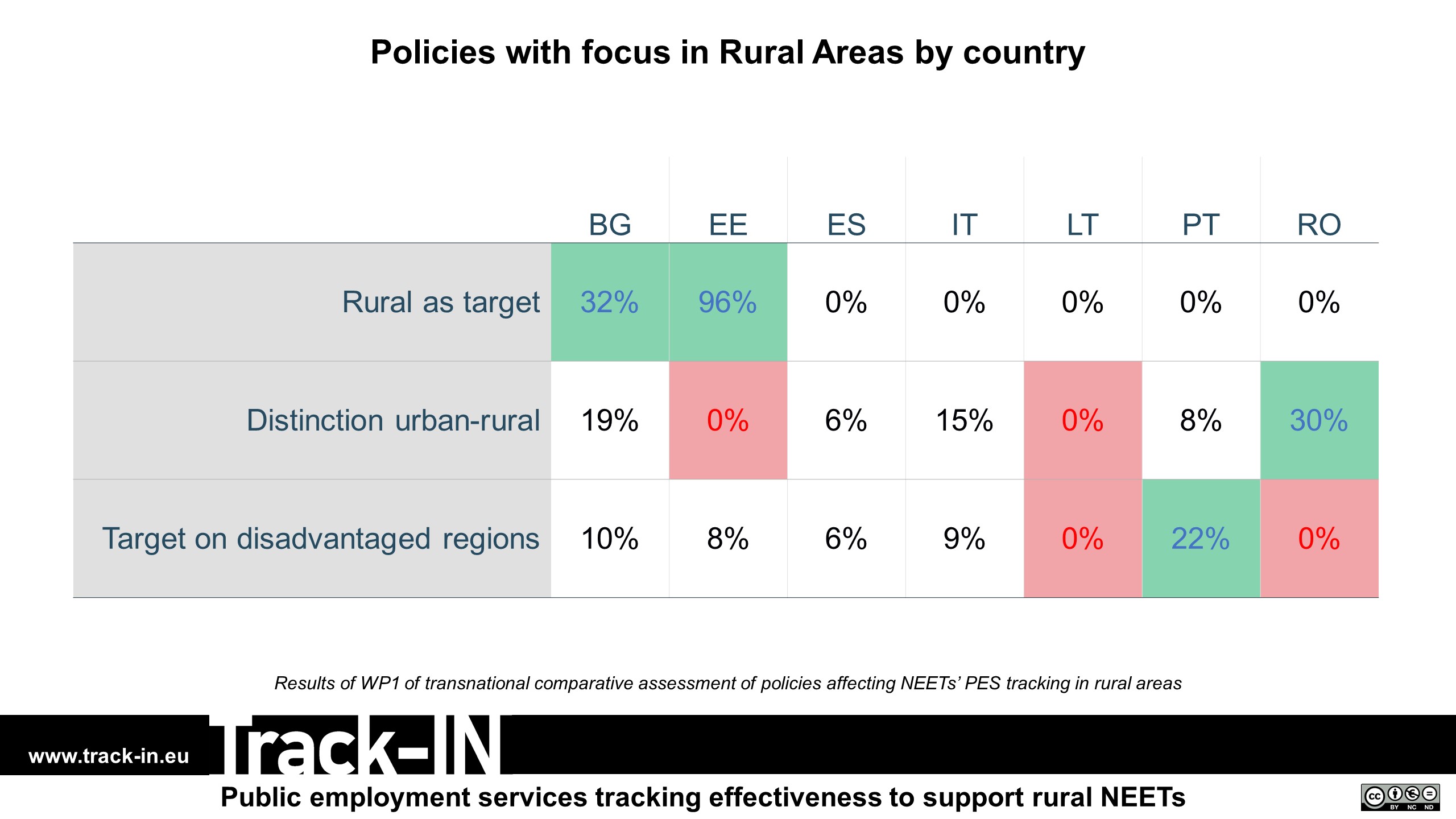
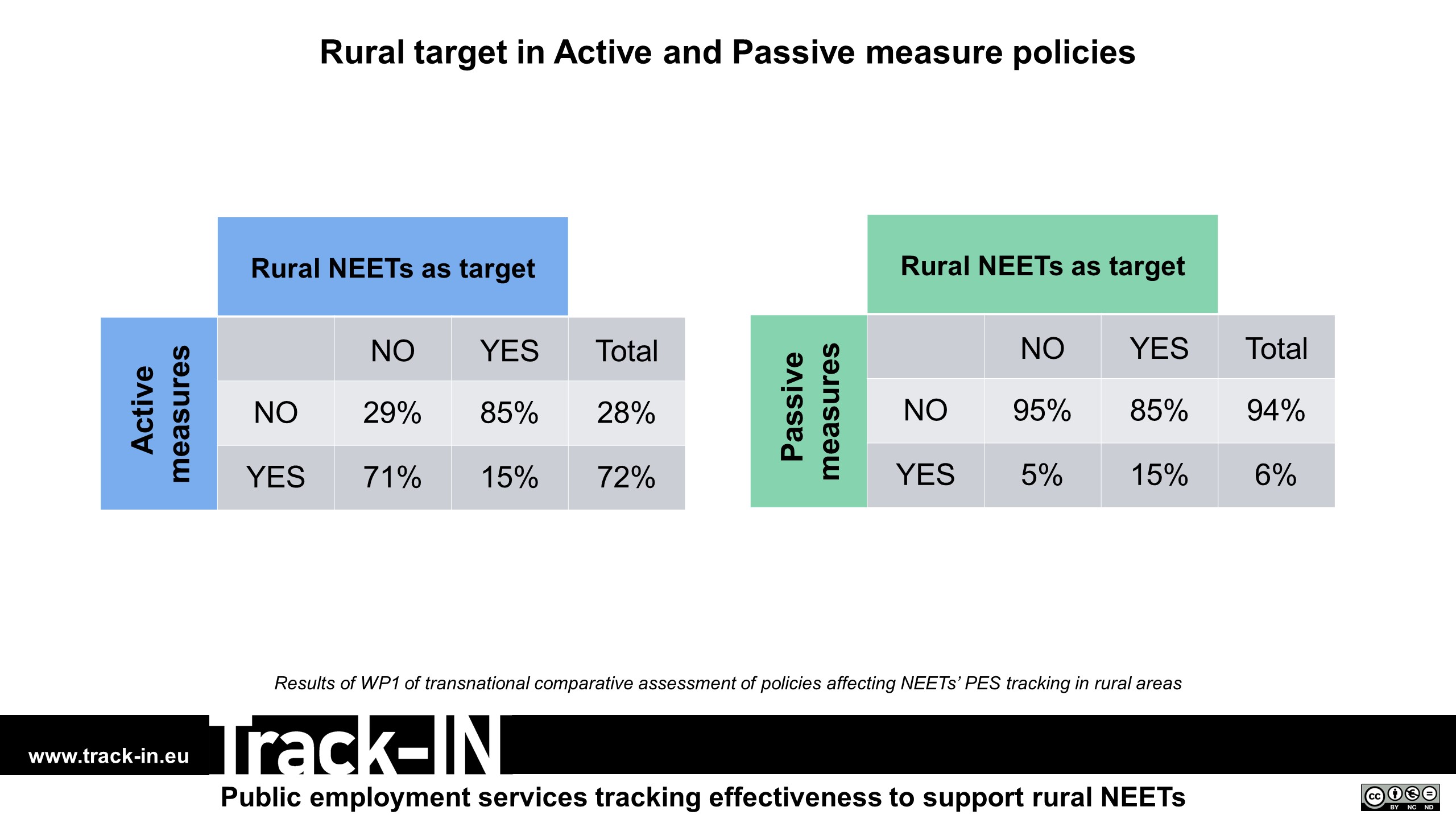
WP2. Rural PES tracking programs mapping and validation
This WP made a comparative case study of different PES tracking support types programs, in 5 steps:
(1) Mapping: identifying all rural PES across the beneficiary countries, using Eurostat Labor Force Survey (2018) collapsed by degree of urbanization to delimit the territorial research scope;
(2) Screening: through a short survey, to target rural PES tracking practices fitting the project;
(3) Data collection: in-depth analysis of selected cases using a multi-informant approach (PES administrative data; program documentation analysis; interviews with PES managers; world-café sessions with NEETs);
(4) Data analysis: combining qualitative data thematic analysis with its quantitative examination (e.g. descriptive and reliability statistics; correspondence analysis) to identify similarity/difference patterns among studied cases for each PES tracking support type;
(5) External validation of practices: most promising, replicable practice of each PES tracking support type validated by a panel of experts and stakeholders, for subsequent impact analysis.
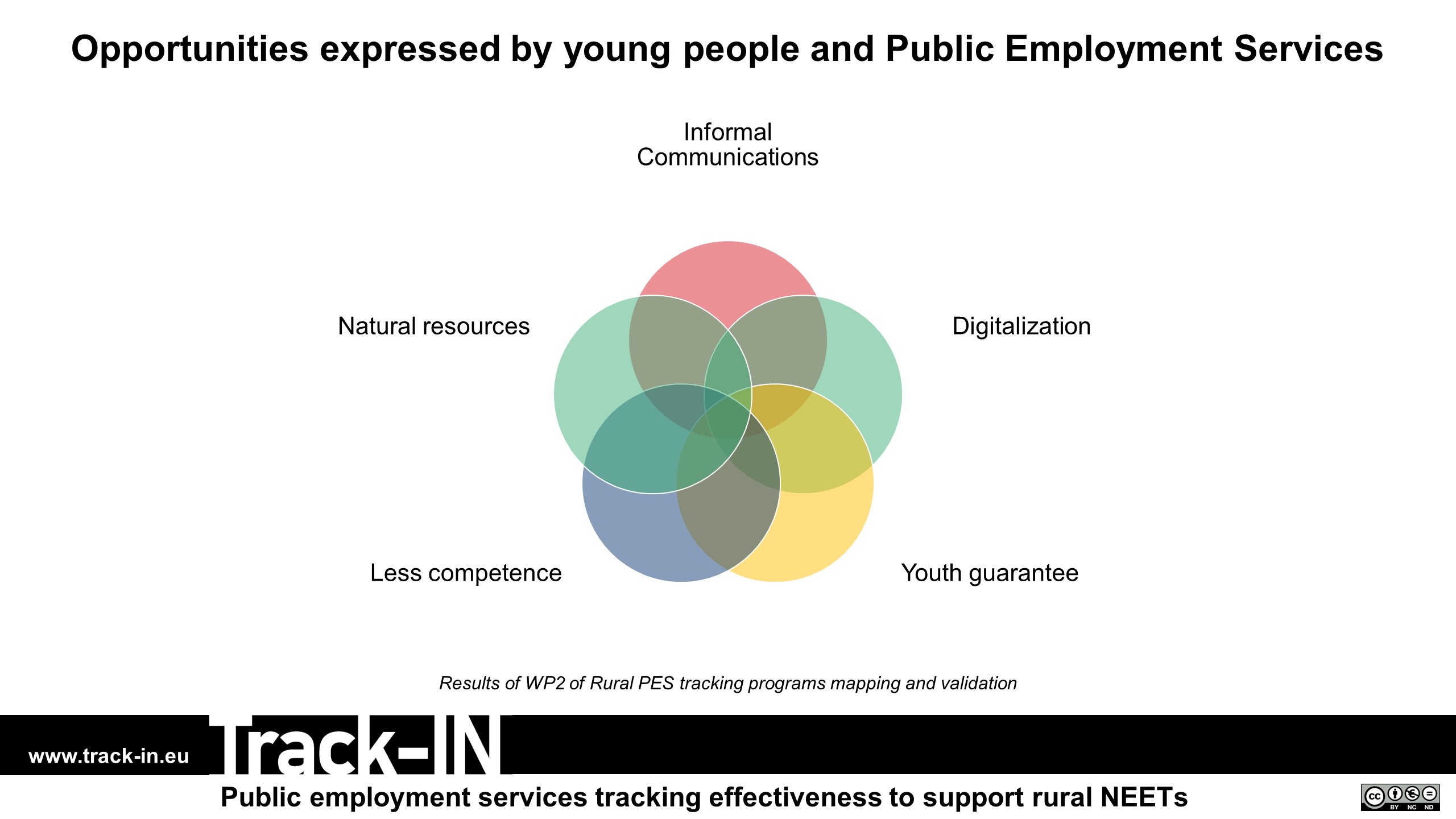
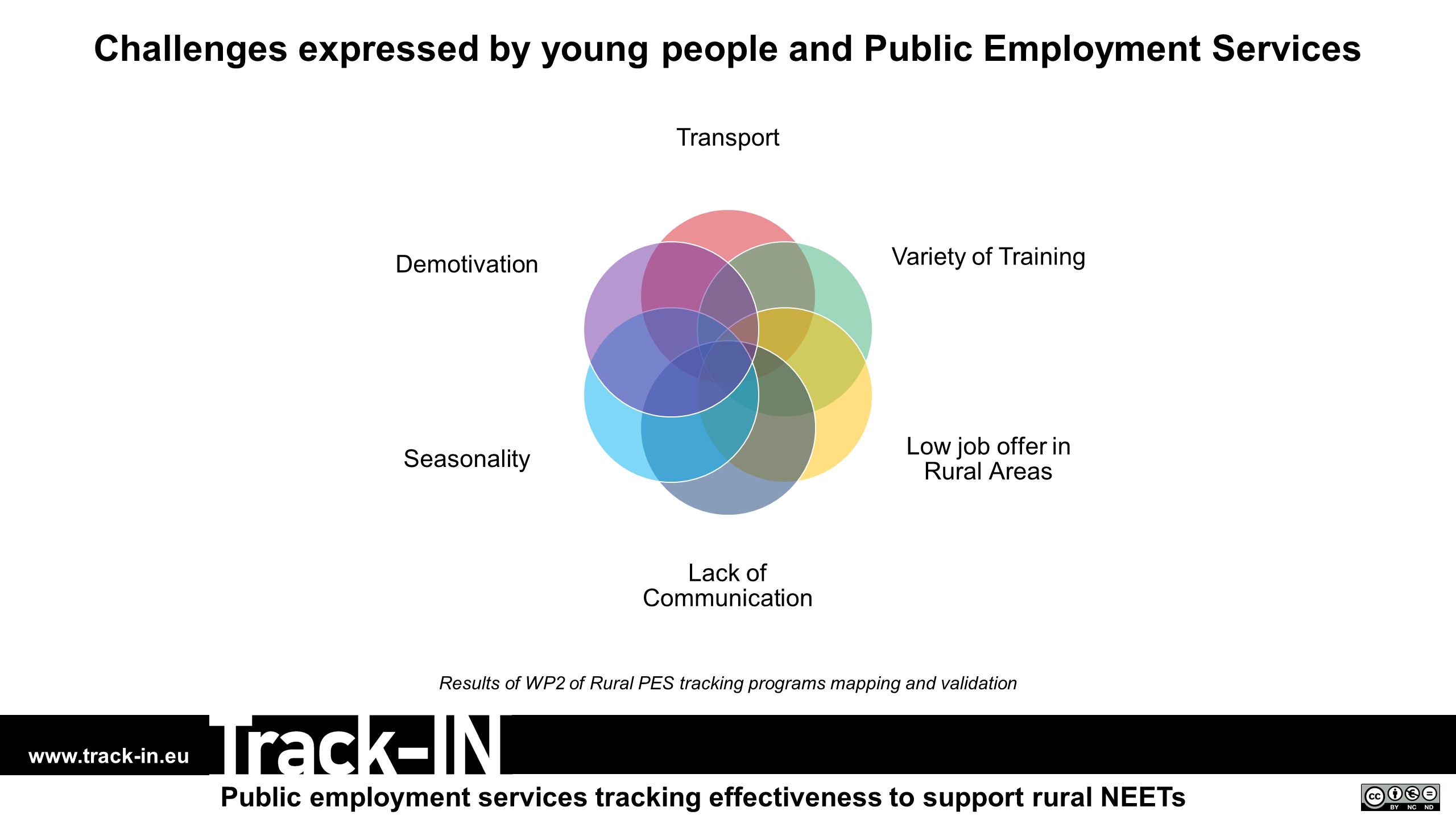
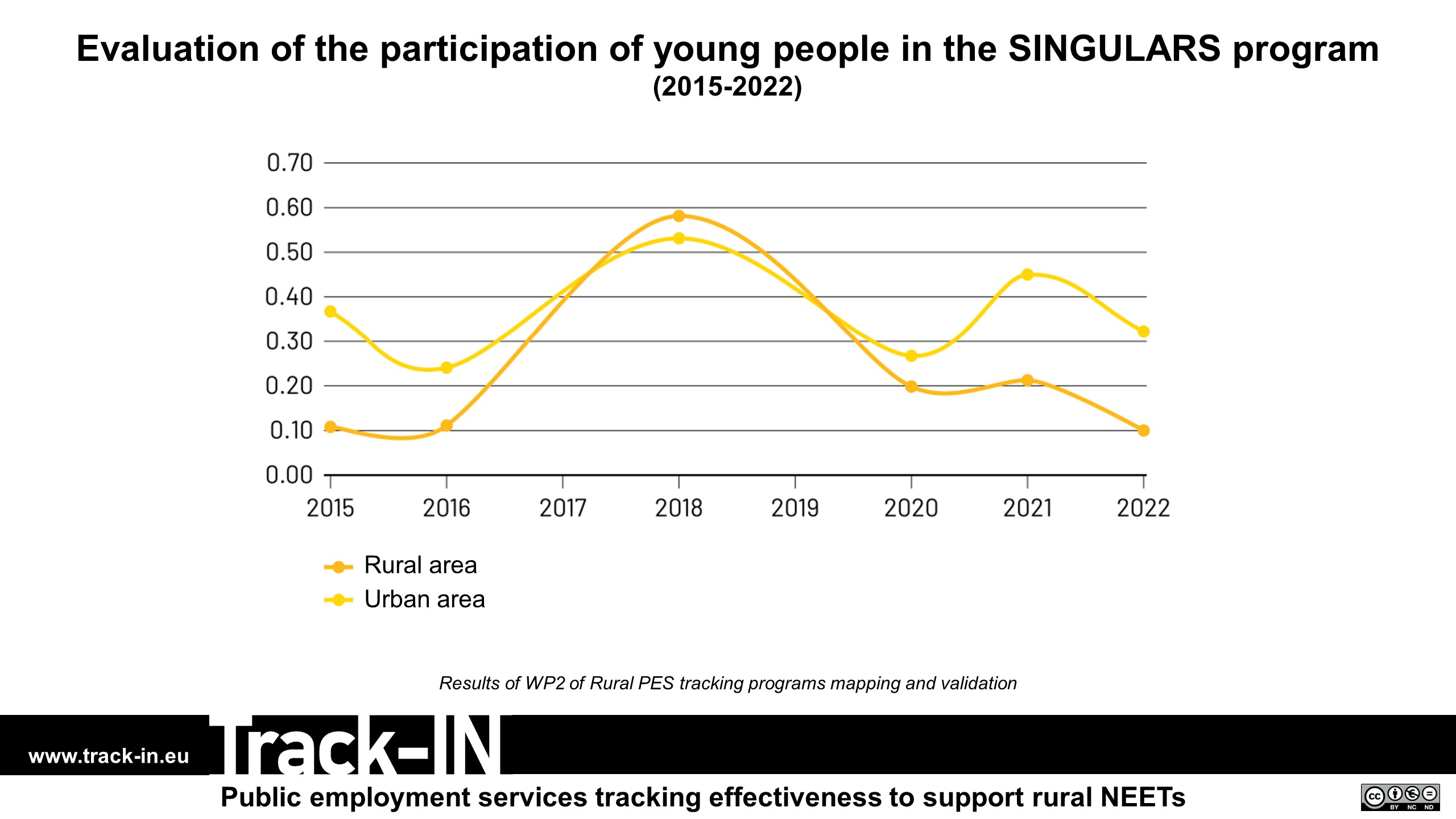
WP3. NEETs’ Tracking Support Types Impact on Rural Areas
Methodologically, this WP will implement Study 3 in 4 steps:
(1) Protocol development: by adopting a 360º measurement approach to capture all PES tracking processes from registration to follow-up; cover short/long-term indicators; include observable and unobservable indicators;
(2) Pilot study: to refine the protocol, through small group data collection and debriefing interviews with rural NEETs;
(3) Sample design: probabilistic sample and fixed-effects panel data approach in 3-time points.
